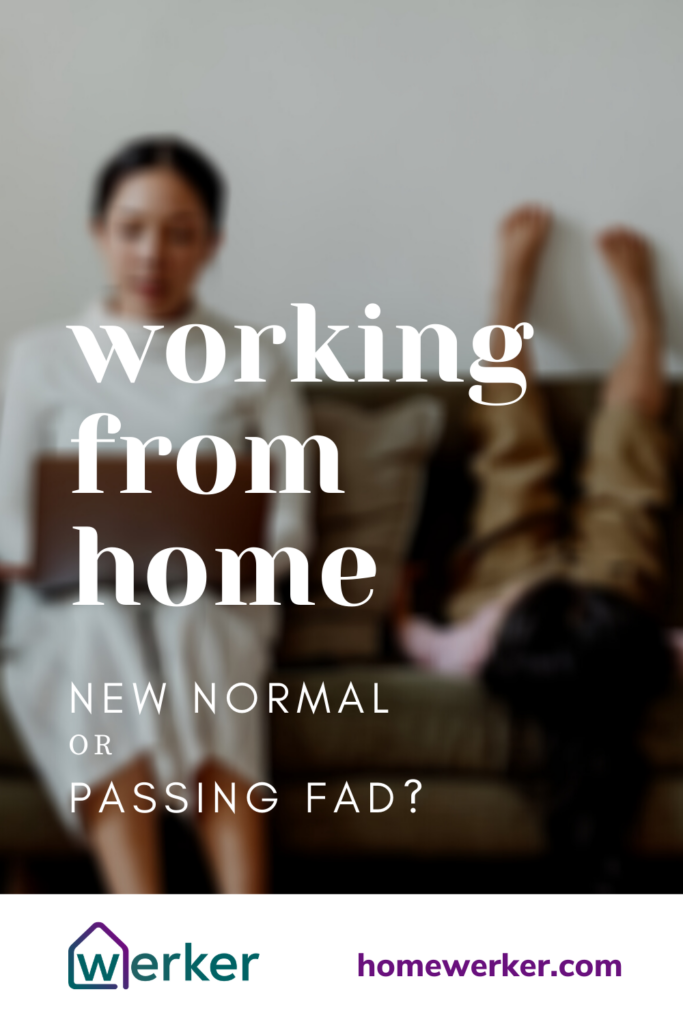Everyone is holding their breath, waiting for workplaces to get back to normal. Desks, water coolers, awkward chats in the hallway with Steve. Remember that? Well, don’t hold your breath too long. Working from home may be here to stay.
Working from home has become the new normal at thousands of companies around the world and this does not seem to be a passing fad. 31% of workers in 2019 reported working at entirely remote companies. A further 56% worked at companies with a mix of remote and office-based workers. Tens of thousands of companies have shifted to hybrid models where working from home is done at least part-time. A recent study found that 37% of US jobs can be done entirely from home and another estimates that the share of days workers spend working from will triple in a post-COVID-19 world. Working from home is here to stay for many employees.
Working from home is not new, and it is increasing
Even before the COVID-19 pandemic, about 25% of workers already worked from home at least one day a week according to the US Bureau of Labor Statistics. The trend was already in place where workers were dipping their toes into the world of remote work. But of course, like any massive paradigm shift, major disruption is necessary to show the merits and feasibility of a new model of doing things. COVID-19 presented the world with one of the largest natural experiments of all time. Would WFH be cheaper? Would workers be as productive as in the office? What are the mental health impacts of working 8 hours a day from the same place as where you sleep? These are all questions that we are starting to see answers emerge. And employers are taking notice to the point where many will make working from home arrangements more common in a post-pandemic world.
Good or bad for the bottom line?
Ultimately, what makes working from home a viable alternative to office life is whether employees can remain at least as productive as they were in the office. The good news for companies is that it seems that WFH is actually even more productive for many remote workers. Research has shown that remote employees are 13% more productive than their office-bound counterparts. Furthermore, the evidence shows that remote employees:
- Exhibit less absenteeism
- Feel more accomplished after the workday
- Exert more effort under more flexible work schedules
- Are more motivated
These elements are enticing for both employers and the workers themselves in many scenarios. Sure, working from a tiny apartment with children running around is considered a nightmare for most. But the reality is that most people who experience remote work like it and generally feel that it contributes positively to their feeling of accomplishment and mental state.

But perhaps more telling is the fact that employers are now catching on to the idea that WFH can lead to massive increases in employee output and productivity. Some very large companies like Apple, Amazon, and Xerox have fully embraced the idea of allowing remote work in many positions. Other companies like Shopify and Automattic (the makers of WordPress) have made working from home the default for all employees. Indeed we are now seeing startups that will never truly have a head office full of worker bees. This new model will become more and more common in the future.
It wasn’t too long ago that most companies wouldn’t dare allow employees to work from home. After all, what if they just watched Netflix all day? In reality that is just not simply the case with most employees. In fact, evidence has shown that remote employees more consistently work longer than 8 hours a day than those in the office due to cutting out the commute and other factors. This is definitely good for the bottom line.
Balancing work, life, and mental health
If working from home is becoming more popular and increasingly accepted among top-level management at large companies then what are the potential impacts on remote workers themselves?
The biggest concern that comes out of the research on working from home is its impact on work-life balance and mental health. Among the biggest concerns of remote workers is burnout. Working longer and longer days can make work-life blend into personal, at a major cost to the employee’s mental health. We know that working from home can cause increased anxiety, social isolation, and even depression. Increased stress and disruption of sleep schedules have both been common for many home workers, especially during the coronavirus lockdown of 2020.
On the flip side, many remote employees report that the flexibility of working from home arrangements have positively impacted on their work-life balance.
What is important to note here is that no remote worker experiences the same effects from making their office at home. And even more importantly, there are many scientifically-proven things that can be done to ensure that working from home is a positive experience instead of one that is viewed with dread.

How to make working from home work for the long haul
Ok, so teleworking is here to stay and people are more and more likely to work for companies that either require remote work or strongly encourage it. What can you do to make WFH not just tolerable, but actually beneficial to your well-being and your career outlook? We have come up with our top ten things that can truly make remote work sustainable.
1. Set your limits
It is very easy to work much more unpaid overtime. The commute is a thing of the past, your office chair is literally visible from your bedroom… In order to truly “make it” in the remote work game, you need to set some limits. Make sure you start and end work on time, even if this means setting up an automatic do not disturb mode on your computer and your other devices when you are off the clock.
2. Don’t work from the bedroom
It is important to set up a dedicated office environment. And this does NOT mean working from under your duvet in bed. Science tells us that creating this barrier between work and personal is a critical element in combatting some nasty mental health issues, let alone the back issues that would surely crop up over time. Get a cheap Ikea desk and the best quality chair you can afford. And if your work will reimburse you, all the better!
3. Communicate regularly but avoid pointless meetings
Social connections have been proven to be a major component of a healthy mind when working from home. The inevitable social isolation that comes with remote work needs to be taken very seriously. Take time to meet with colleagues on purely social video calls to make up for the more random hallway meetings we are all used to. At the very least, keep up with closer colleagues via instant message when possible. Human connection is key.
4. Exercise
Because anxiety and depression can be common among home workers, it is important to keep up a predictable exercise routine. Replace your morning commute with a 15-minute walk around the block. Take a break during the mid-afternoon to take a jog or jump on the stationary bike. All of these things have been proven to help with symptoms of anxiety and depression.
5. Keep a routine
Get to bed at the same time every night and wake up at the same time every morning. Get dressed in real (acceptable) office clothes and show up to your home office just like you would have at headquarters. Schedule breaks directly in your calendar so you don’t get continually pulled into meeting after meeting. Controlling your time and making a routine is your superpower as a home worker.
6. Make WFH official
Make sure that you have worked with your employer on a work from home agreement that lays out all of your responsibilities and those of the company. Not only is this process helpful legally, but it can clear up any miscommunication between you and your supervisor before it even crops up. Not sure how to write a WFH agreement? We put together a working from home agreement template that you are welcome to use.
7. Don’t completely cut out the office
Research has shown that for many workers there is actually an optimal number of days per week to work from home. Some say that two days a week worked from home is a perfect amount whereas others argue that once or twice a month for in-person meetings and social interaction is good enough. What is important is to not completely remove the crucial social interaction that comes with a job. Yes, even Debbie… You will be surprised how much you miss inane stories and idle banter once you have worked from home for an extended period of time.
8. Block your time
Many workers report difficulty in staying focused on one task when working from home. Counteract this by doing “time blocking” to stay focused on a single task without interruption. The Pomodoro Technique is our favorite time blocking technique and all it takes is a stopwatch and a notepad to get started.
9. Make sure your gear and software are adequate
Treat your home office like you would the central office. You need to have everything at your fingertips to make you as productive as possible. Make sure your office equips you adequately and ask for reimbursement on items like noise-canceling headphones, a good office chair, chair mat, or critical software packages. Your employer owes you this much. Check out our list of recommended gear for your home office for some ideas.
10. Master online meetings
You are going to spend a lot of time on video conferencing software. Take some time to work with your IT department if you are consistently having connectivity or audio/video issues. Not only is it annoying for you, but your colleagues will appreciate you being fully present during meetings. While you’re at it, check out our top ten online meetings etiquette rules so your co-workers don’t want to strangle you.





